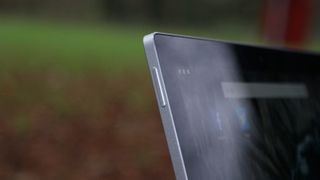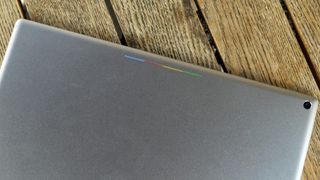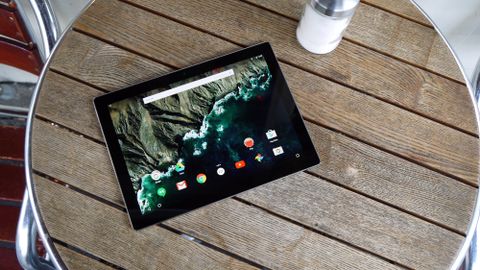TechRadar Verdict
The Google Pixel C has it all: a fantastic display, heaps of power, a premium design and a lofty price tag. The only problem is, it's up against the excellent iPad Pro and it ain't exactly cheap.
Pros
- +
Fantastic screen
- +
Premium design
- +
Solid power
Cons
- -
Heavy
- -
Keyboard is pricey option
- -
No microSD slot or 4G model
Why you can trust TechRadar
Update: The Google Pixel C has a new software update, and some new competition in the iPad Pro 9.7 and Samsung Galaxy Tab S3. We've updated our Pixel C review to reflect these developments.
The Pixel C was launched a little half-heartedly by Google during its Nexus 5X and 6P event back in October 2015, and since then it's seen some serious rivals show up in the form of the iPad Pro 9.7 and Samsung Galaxy Tab S3.
It may be starting to show its age, but a recent software update to Android 7 Nougat has managed to keep it relevant.
The Pixel C was a new venture for Google, being the first tablet designed and built by the search giant.
Previous 'Google' slates sporting the Nexus brand were been made by Asus and HTC; this time round, though, Google's had total control over every aspect, shaping the device specifically for Android.
The 10.2-inch, 2560 x 1800 display and premium metal build means the Pixel C sits comfortably at the top end of the tablet market, bridging the gap between the Nexus slates and Google's Chromebook Pixel laptop.
It attempts to bridge that gap with a clever keyboard dock which transforms the Pixel C from a standard Android tablet into a hybrid laptop.

Google Pixel C price
- 64GB model: £479 ($599, around AU$820)
- Keyboard dock: £73 ($124, around AU$160)
At launch you could pick up the Google Pixel C in two storage sizes: 32GB and 64GB.
The 32GB version set you back £399, (US$499, around AU$680), while the larger storage size is available for £479 (US$599, around AU$820).
Now though, only the pricier 64GB model remains, but it's still comfortably cheaper than the Microsoft Surface Pro 4 (£700, $930, AU$1,499) and (admittedly newer) iPad Pro 9.7 (£549, $599, AU$849).
If you want to make the most of the Google Pixel C you'll want to pick up the Pixel C keyboard as well, which will set you back a further £73 ($99, around AU$160) - which is much cheaper than the initial £119 ($149) launch price.
You're looking at a total spend of £552 ($698, around $940) for the 64GB Google Pixel C if you want the complete package, which is still cheaper than rivals (when you include their keyboards as well).

Design
There's no mistaking that the Pixel C is a premium tablet. Finished in Anodized Aluminum, the Pixel C looks and feels like an expensive piece of tech as soon as you lay eyes and hands on it.
That style isn't light though, and at 517g it's considerably heavier than the similarly proportioned iPad Pro 9.7, which tips the scales at 437g – although the Pro 9.7 is shorter, narrower and thinner than the 242 x 179 x 7mm Google Pixel C.
There's a healthy amount of bezel surrounding the 10.2-inch display, and considering there's no physical home key it feels like wasted space. We'd have liked a larger screen, or tighter dimensions – but the tech has to fit somewhere, which probably explains the extra bulk.

You don't even get a fingerprint scanner, a feature that Google's included in its Nexus 5X and Nexus 6P smartphones after providing dedicated support for the digit-reading tech with Android Marshmallow. It feels a little bit like a missed opportunity.
With the Pixel C held in landscape orientation, the power/lock key is located on the left of the top edge, while the volume rocker sits high up on the left, with a USB-C port at the bottom of the same side.
The USB-C port enables you to charge the Pixel C and transfer data to and from it, but it also has another use. Connect a phone or Pixel laptop to the Pixel C and the tablet can charge your other devices – handy if your phone is running low and there's no power outlet in sight.

There are also dual stereo speakers on either side of the tablet, and a 3.5mm headphone jack completes the array of features on the right side of the Pixel C.
On the rear, the 8MP camera is joined by the iconic Chromebook light bar shining in Google's four trademark colours. It's Google's answer to the illuminated Apple logo on the MacBook range, ensuring that even in dark environments people know the brand of your machine. Thank God.
It is rather attractive, and it actually serves a purpose other than blowing Google's trumpet. Double-tap the light bar and it can display the Pixel C's battery level, even when the device is turned off – that's really useful if you want to see if it needs a quick charge.

The flat edges mean the Pixel C doesn't sit particularly comfortably in the hand, and this isn't a tablet you'll want to be clinging to for extended periods of time.
The location of the various buttons, and the orientation of the light bar, signals that Google intends for you to use the Pixel C in landscape mode most of the time. But portrait mode is readily available, and is arguably better for activities such as web browsing.
The design then, is pleasing to the eye, but the Pixel C still can't hold a candle to the iPads. Apple's flagship tablets just feel nicer, look slicker and weigh less.
We really like the Pixel C's design, but put it next to the iPad and Apple still wins the beauty contest.
Current page: Introduction and design
Next Page Dazzling display, clever keyboard, tasty Marshmallow
John joined TechRadar over a decade ago as Staff Writer for Phones, and over the years has built up a vast knowledge of the tech industry. He's interviewed CEOs from some of the world's biggest tech firms, visited their HQs and has appeared on live TV and radio, including Sky News, BBC News, BBC World News, Al Jazeera, LBC and BBC Radio 4. Originally specializing in phones, tablets and wearables, John is now TechRadar's resident automotive expert, reviewing the latest and greatest EVs and PHEVs on the market. John also looks after the day-to-day running of the site.

